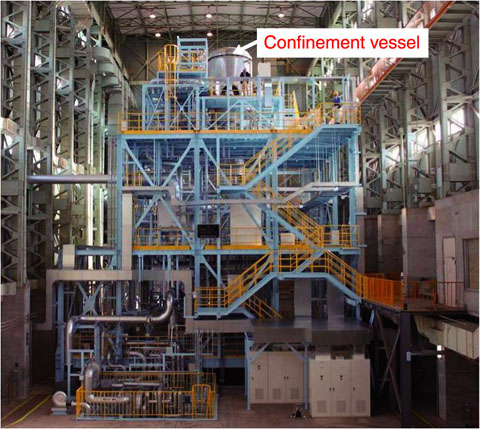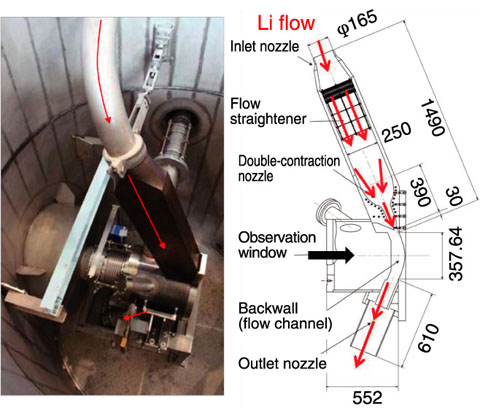
Fig.3-27 IFMIF/EVEDA Li Test Loop (ELTL) after completion of construction

Fig.3-28 Configuration of TA (unit: mm)

Fig.3-29 Flow appearance of Li target
For developing materials to be used in the fusion DEMO reactor, it is necessary to evaluate how irradiation damage by the neutrons generated in the fusion reaction affects the candidate materials. For this purpose, the Engineering Validation and Engineering Design Activities (EVEDA) for Fusion Materials Irradiation Facility (IFMIF) project, hereafter referred to as IFMIF/EVEDA, has been launched under the Broader Approach Activities in the bilateral framework between The European Atomic Energy Community (EURATOM) and the Government of Japan. The IFMIF is an accelerator-based (D+-Li) source in which neutrons are generated by injecting two deuteron beams into a liquid Li stream (Li target). The major R&D activity on the Li target facility in EVEDA was centered on the construction of the IFMIF/EVEDA Li test loop (ELTL), which was used to simulate the actual IFMIF Li target. The ELTL was set in operation for two years for the purpose of collecting indispensable data that could be used to construct the IFMIF Li target and complete the IFMIF engineering design.
Construction of the ELTL was commenced in 2009 and completed within two years. Performance tests were carried out on March 10, 2011 at the O-arai Research and Development Center in cooperation with Advanced Liquid Metal Technology Experiment Section, JAEA (Fig.3-27). In the ELTL, heated (250 to 350 °C) liquid Li can be circulated, and an obi-shaped Li target whose velocity, thickness, and width are 15 m/s, 25 mm, and 100 mm, respectively, can be formed in the target assembly (TA). The specification with regard to the velocity and the thickness at the target region are the same as that envisaged in the IFMIF, while the width is 1/3. In the TA at the top of the platform, an appropriately shaped (curved) Li target is formed by the double-contraction nozzle along the concave backwall (BW), as shown in Fig.3-28. The nozzle is designed on the basis of Shima’s nozzle such that it yields a stable jet with a velocity as high as 20 m/s. The static pressure inside the Li target is enhanced by the centrifugal force generated by the flow along the BW. Consequently, boiling by the D+ beam heat is prevented.
The performance tests conducted after the construction of the ELTL included the following: 1) Li ingot installation in the ELTL, 2) Li charging and draining, and 3) Li circulation tests. In the third set of tests, the performance of each component comprising the ELTL was confirmed to meet the predefined specifications. In the final phase of the circulation test, stable Li flow at a velocity of 5 m/s was successfully achieved in the target assembly, at an Ar gas pressure of 0.12 MPa (Fig.3-29). In the EVEDA stage, the stability of the Li target and Li purification technologies are scheduled to be validated for the engineering design of the IFMIF.